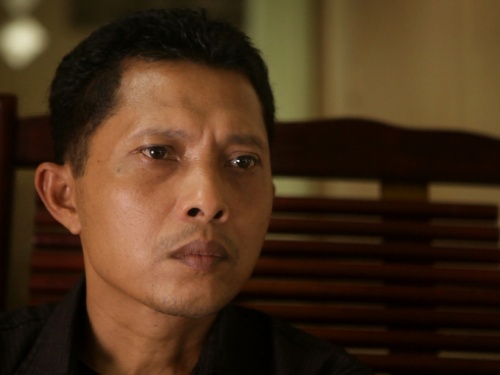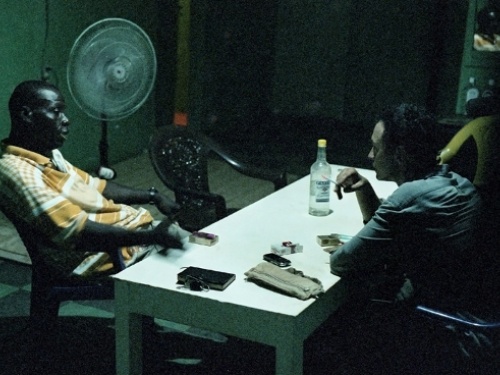Impunity, Fear and Filmmaking: Joshua Oppenheimer's Documentaries
Following the screenings of The Look of Silence and The Act of Killing, which had a run of 52 weeks at the ICA, director Joshua Oppenheimer joined us to answer questions on his work. On 12 June 2015, we were also joined by Adi Rukun, whose meetings with the perpetrators of the Indonesian genocide form the basis of The Look of Silence.
Here, Maya Caspari rounds up the Q&A discussions and reflects on the films.
There is a scene in Joshua Oppenheimer’s documentary The Look of Silence in which Adi Rukun, whose brother was murdered in the Indonesian genocide, confronts his uncle about his role in the killing. His uncle’s response, which we hear repeated, mantra-like, in various forms by individuals throughout the film, encapsulates the fear, the silences and the complex levels of implication that run so deeply through the society that Oppenheimer documents: He did not know what was happening, he was only following orders, he was not responsible.
Denial and impunity are themes that also concern Oppenheimer in his first documentary The Act of Killing. This film follows the perpetrators of the genocide as they reconstruct the events in the style of the Hollywood films they admire, recasting themselves as history’s heroes. When Freud wrote of screen memory, he was referring to the psychological process through which one memory can come to function as a substitute—a ‘screen’—for another that has been repressed. Here, this metaphor is made literal, as the perpetrators perform the past that they want to remember for the camera. The result is a nightmarish, deeply unsettling insight into human psychology, not only exposing the desperate, grotesque, and unexpectedly self-conscious fictions of the perpetrators, but also forcing us to question our own implication in such narratives, both as viewers of the film and as performers in our own lives.
The Look of Silence offers a change in pace from the feverishness of the first documentary. It is a film of echoes, of associations and of traces, conjuring up the painful tangibility of unspoken traumas of the past. In one shot, the camera lingers on an almost deserted landscape, occasional traffic passing ghostlike across it; visually making palpable a sense of absence. Intimate close-ups of the bodies of Adi’s elderly parents follow perpetrators’ boastful recollections of their crimes, their descriptions uncomfortably recalling the physical details, the mutilation of the bodies of those that they murdered. This positioning of scenes does not create easy answers or facile links, but instead evokes multiple chains of visual and emotional association, drawing our attention to the enduring traces of individuals’ past actions and narratives upon the lives of others.
Structured around the dialogues between Adi and the perpetrators, the film is focused on their relationships—the very fabric of Indonesian society—as much as on the psychology of the individuals themselves. As we repeatedly watch Adi challenging the men responsible for the death of his brother, often visibly moved yet unflinchingly direct, we cannot help but be struck by the proximity in which perpetrators and victims live. This draws out the political thrust of the film: as Oppenheimer comments in this Q&A with Adam Curtis, which took place after the ICA screening of the film on 12 June 2015, it was as if he had "wandered into Nazi Germany 40 years after the Holocaust only to find the Nazis were still in power." As such, the film needs to show "how torn the society is today and how urgently [...] reconciliation and some form of justice are needed."
Questions of relation also form the ethical heart of the film. Oppenheimer speaks here of the need for the viewer to empathise with the perpetrators as well as the victims, of the importance of not presenting them as wholly other, cut off from the reality of our own lives. Yet, empathy also implies a level of distance, an engagement with the difference—as well as the potential proximity—between our own standpoint and that of another. It is this uneasy, yet fundamentally active, negotiation of difference that the film so powerfully forces us to engage in, not only exploring the figures’ relation to each other, but also creating points of potential contact between us as viewers and those on screen. ■
The Look of Silence opened at the ICA Cinema on 12 June.
This article is posted in: Articles, Blog, Events, Film
Tagged with: Joshua Oppenheimer, The Look of Silence, The Act of Killing, Talks, Director Q&A, Documentary, Indonesia, Trauma, Maya Caspari






